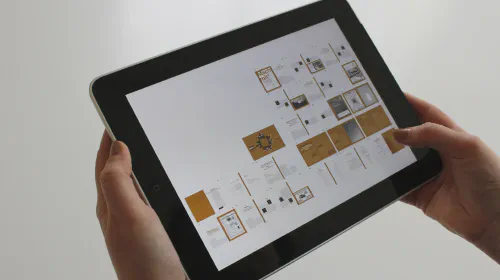Types of Digital Archiving Solutions
Salomon Kisters
Sep 25, 2023This post may contain affiliate links. If you use these links to buy something we may earn a commission. Thanks!
In today’s digital age, the need for effective digital archiving solutions is more important than ever.
With the exponential growth of digital data, organizations and individuals require efficient methods to store, organize, and retrieve their digital assets.
In this article, we will explore different types of digital archiving solutions available and their benefits.
Cloud Storage
One of the most popular types of digital archiving solutions is cloud storage.
This involves storing data on remote servers accessed through the internet.
Cloud storage offers several advantages including easy accessibility from anywhere with an internet connection, automatic backups, and scalability.
Additionally, cloud storage providers often offer advanced security measures to protect stored data, including encryption and multi-factor authentication.
On-Premises Solutions
For organizations that prefer to have complete control over their data, on-premises digital archiving solutions are a viable option.
This involves storing data on local servers within the organization’s premises.
On-premises solutions provide enhanced security as the data remains within the organization’s physical boundaries.
However, they require dedicated IT infrastructure and resources for maintenance and management.
Digital Preservation Systems
Digital preservation systems specialize in long-term archiving and ensuring the integrity and authenticity of digital assets.
These systems employ various techniques, such as file format migration, metadata management, and checksum verification, to ensure that digital content remains accessible and usable over time.
Digital preservation systems are commonly used by libraries, museums, and archives to preserve cultural heritage and valuable historical records.
Content Management Systems
Content management systems (CMS) are widely used for organizing and archiving digital content.
CMS platforms provide a centralized repository where users can store and manage various types of digital assets, such as documents, images, and videos.
They often include features like version control, search functionality, and user access controls.
CMS solutions are popular among businesses and organizations that need to manage large volumes of digital content efficiently.
Digital Asset Management Systems
Similar to CMS, digital asset management (DAM) systems focus specifically on managing and archiving multimedia assets.
DAM systems provide advanced features for organizing, categorizing, and searching for digital assets, making it easier to find and reuse content.
These systems are commonly used in industries such as marketing, advertising, and media, where efficient management of visual and multimedia assets is crucial.
Tape Storage
Although it may seem old-fashioned, tape storage is still a viable option for long-term archiving.
Tape storage offers high storage capacity at a low cost, making it ideal for organizations with massive amounts of data.
Additionally, tape storage provides offline storage, protecting data from cyber threats.
However, accessing data from tape storage may be slower compared to other digital archiving solutions.
Hybrid Solutions
In some cases, organizations may opt for a hybrid archiving solution that combines multiple methods.
This involves using a combination of cloud storage, on-premises solutions, and other archival techniques.
Hybrid solutions offer flexibility, allowing organizations to choose the most suitable storage method for each type of data.
For example, frequently accessed data can be stored in the cloud for easy accessibility, while sensitive data can be stored on-premises for enhanced security.
Conclusion
Choosing the right digital archiving solution is essential for ensuring the long-term accessibility, security, and usability of digital assets.
Whether it’s cloud storage, on-premises solutions, digital preservation systems, CMS, DAM systems, tape storage, or hybrid solutions, each option has its own strengths and considerations.
Organizations and individuals must evaluate their specific needs and requirements to select the most appropriate digital archiving solution that meets their objectives.
Stay informed with the latest insights in Crypto, Blockchain, and Cyber-Security! Subscribe to our newsletter now to receive exclusive updates, expert analyses, and current developments directly to your inbox. Don't miss the opportunity to expand your knowledge and stay up-to-date.
Love what you're reading? Subscribe for top stories in Crypto, Blockchain, and Cyber-Security. Stay informed with exclusive updates.
Please note that the Content may have been generated with the Help of AI. The editorial content of OriginStamp AG does not constitute a recommendation for investment or purchase advice. In principle, an investment can also lead to a total loss. Therefore, please seek advice before making an investment decision.

Advantages of Digital Archiving: Preservation, Access, Efficiency, Security & More
Learn about the advantages of digital archiving in preserving information, enhancing accessibility, saving space and costs, ensuring security, promoting collaboration, and meeting compliance requirements.

Top Digital Archives for Art
Discover the top digital archives for art and embark on a journey through centuries of masterpieces.
Protect your documents
Your gateway to unforgeable data. Imprint the authenticity of your information with our blockchain timestamp